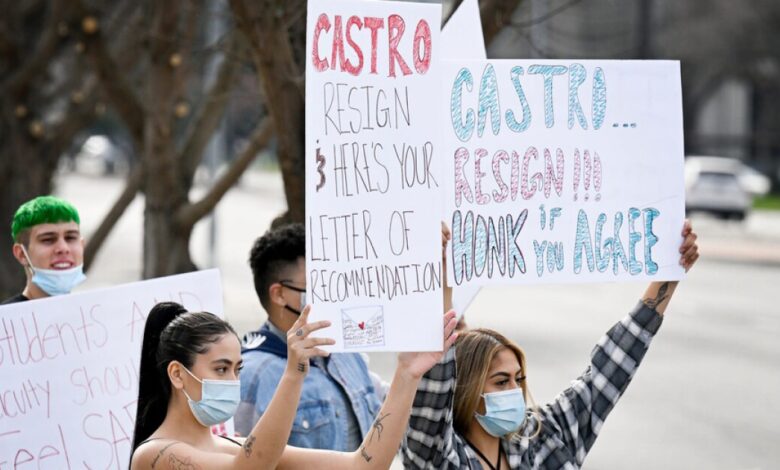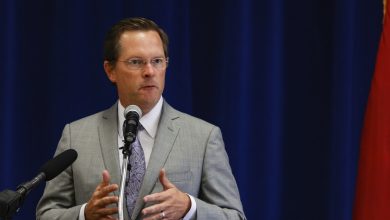Cal State Failed to Respond to Sexual-Misconduct Complaints. Here Are 4 Things to Know.

The California State University system improperly responded to some allegations of sexual harassment, dropped the ball on investigating and documenting certain cases, and often didn’t hold perpetrators accountable, leading to a widespread lack of confidence that the reporting of misconduct would lead to any institutional action.
That’s the damning portrayal outlined in lengthy reports released this week by the California state auditor’s office and a law firm hired by Cal State. The auditor reviewed how Cal State handled 40 specific sexual-harassment accusations by university employees. The law firm, Cozen O’Connor, examined policies, procedures, and culture at all 23 of the system’s campuses.
The assessments of the nation’s largest public-university system highlight that, despite years of increased attention on campus sexual misconduct, institutions are still often falling short — a problem exacerbated by shifting federal regulations, staffing turnover, and fear of liability.
“They are tragically underresourced for their population, and what they are asked to do in the federal and state context,” said Gina Maisto Smith, chair of Cozen O’Connor’s institutional-response group, of the Cal State system. “There has to be a reckoning of that.”
Title IX has been a pressing issue in the Cal State system for the past 18 months, starting with the resignation of Chancellor Joseph I. Castro. A USA Today investigation found that while Castro was serving as president of California State University at Fresno, he mishandled several sexual-harassment complaints against Frank Lamas, a senior administrator. (Castro is now a professor of leadership and public policy at California Polytechnic State University at San Luis Obispo .)
Then, at Sonoma State, Patrick McCallum, the husband of the university’s president, was accused of inappropriate “touching and conversations that made some individuals uncomfortable,” and was described as “creepy,” “disgusting,” and “pervy.” McCallum denied the allegations but later released a statement saying he was “deeply sorry” that his “words and actions” hurt people.
Despite years of increased attention on campus sexual misconduct, institutions are still often falling short.
In 2023, concerns over sexual misconduct have continued to proliferate in the system. The president of Cal State at Fullerton was accused of inappropriately touching students. A Los Angeles Times investigation found that that accusation went uninvestigated. Controversies have also surfaced at California State University at Chico, San Jose State University, California State University at Sacramento, and at Cal State-East Bay.
“What we heard at many CSU universities were deeply held feelings of anger, grief, and pain in response to the incidents highlighted publicly,” the Cozen O’Connor report stated. “Across all constituencies, we heard grave disappointment and sorrow in what many viewed as institutional betrayal.”
One particular challenge, according to the state auditor, is that the federal government in 2020, under President Donald Trump, raised the threshold for what counted as sexual harassment under Title IX, the gender-equity law that governs how colleges respond to sexual misconduct. Colleges can still investigate and discipline people for harassment that falls outside of Title IX. As administrators tried to interpret different definitions, however, they sometimes erroneously decided not to investigate reports, per the auditor’s review.
The state auditor and Cozen O’Connor recommended, among other things, that the Cal State system improve accountability, support, and communication to combat sexual harassment and other misconduct. Such a shift, Cozen O’Connor said in its report, would very likely take a “number of years.”
Here are four ways, according to the two reports, in which Cal State failed to properly respond to sexual misconduct.
Deficient Documentation
Failure to document complaints was a major issue identified by both the auditor and Cozen O’Connor. The result, investigators said, is that Cal State campuses have missed potential patterns of abusive behavior.
Among the 40 cases reviewed by the state auditor, administrators failed to document a rationale for closing 11 of them without an investigation.
In another seven cases, the state found “significant deficiencies” that “raised questions about their outcomes.” Furthermore, campuses had no consistent approach for disciplining employees when an investigation found they’d committed harassment.
Across the 23 campuses, Cozen O’Connor found no consistent standard for tracking reports. Each institution had a different process, which “obscures institutional lines of sight, compromises informed responses, and inhibits the ability to gather, track, or compare data across universities,” the firm’s report said.
Because such information wasn’t tracked across the system, an employee within Cal State could, after being reported on one campus, move to another that didn’t know about the misconduct.
Lack of Campus Trust
Many students, faculty, and staff were skeptical of the reporting process. They believed that campuses acted only to protect their institutions from lawsuits and not to safeguard the people experiencing harm, Cozen O’Connor found.
The state auditor found that investigations could take months to a year, with little to no communication from the university in the interim.
In one case, it took more than five years for a campus to reprimand a faculty member who committed sexual harassment. After missing the statute of limitations for disciplinary action, the faculty member was issued only a letter reprimanding him for his conduct.
Even if credible complaints were filed against faculty members or others in positions of power, students and others said they believed accountability was unlikely.
“The university’s definitions of conduct do not support survivors or complainants,” one student wrote. “Reporting has never solved anything for myself or my peers.”
Inadequate Resources
Employee turnover and inadequate funding were widespread problems, investigators found. Title IX officials and other staff members told Cozen O’Connor that a lack of resources had hindered their ability to proactively improve campus culture.
Across all constituencies, we heard grave disappointment and sorrow in what many viewed as institutional betrayal.
“We just default to the compliance-mandated programs,” an anonymous respondent told the firm.
The Cozen O’Connor report said the system’s legal staffing was “woefully deficient.” Each Cal State campus, according to the report, is assigned one lawyer.
Not only are institutions failing to see patterns of behavior, the report said, but they are also unable “to track the effectiveness of supportive measures and other remedies to address harassment or discrimination.”
Unprofessional Conduct Is Overlooked
Often, complaints of alleged sexual harassment don’t meet the precise threshold set out in Cal State’s nondiscrimination policy — even though the conduct is still unprofessional.
Examples include microaggressions, bias, intolerant acts, and bullying. Colleges have long struggled to respond to such behavior, and Cal State is no exception.
People interviewed for the two reports said that such conduct is often “disruptive to the fabric of the living, learning, and working environment.”
Colleges typically don’t have a written policy or formal mechanism for setting behavioral expectations, Cozen O’Connor said in its report. What’s more, managers aren’t adequately prepared to intervene and resolve interpersonal conflicts.
Source link






